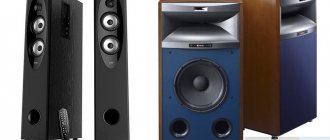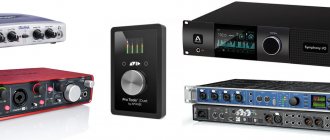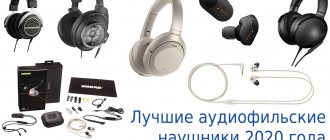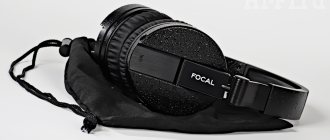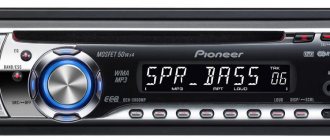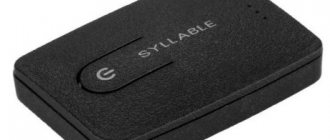Monitors are an essential part of a home recording studio and have no less influence on the final sound of the mix than its other elements. Unlike household acoustics with a characteristic color, a good monitor reliably conveys the sound image and allows you to mix the material correctly and in a balanced manner.
Although a subjective assessment of sound is important, when choosing, you should focus primarily on the amplitude-frequency response of the device and the range of reproduced frequencies. Of course, the price of the device plays a significant role. The cost can be affected by materials, speaker size, power, frequency range and other parameters. Let us also remind you about the classification of monitors into active and passive. Active - with a built-in amplifier, passive - without. Try to calculate what will be more profitable for you personally: buy active monitors right away or save money and order passive ones complete with an external preamplifier.
When choosing, you need to take into account the size and properties of the room, as well as the genre of music that will be created in the studio. To provide sound in a home studio, you will need near-field monitors. Far-field devices are too powerful for small rooms and are needed more for mastering, when the main mixing work has already been completed.
We analyzed the most popular models of 2022 and made a brief overview of their features. Based on them, you can choose monitors for yourself and your tasks.
JBL 305P MkII
Woofer: 5”| Twitter: 1” | Amplifier: Bi-amp Class D | Power 82 W | Frequency range: 43 Hz – 24 kHz
Pros:
- Professional sound, not inferior to the top segment
- Neutral, smooth sound in any room
- Improved LF driver characteristics
- Detailed sound
Minuses:
- Relatively high self-noise level
- No legs (soft stickers included)
- It is necessary to take into account the small phase difference between HF and LF
The JBL 305P MkII is an open-type active two-way monitor that delivers excellent detail and wide dynamic range. The system has a 5-inch neodymium magnet woofer and a 1-inch tweeter. ICW technology with a special waveguide design allows for a smooth transition between woofers and tweeters, and also increases the size of the favorable listening area.
Two Class D amplifiers separate high and low frequencies. To improve bass reproduction at any volume level, there is a Patented Slip Stream port located on the rear wall. The default frequency response can be adjusted using the HF Trim and Boundary EQ switches. The total power of the amplifier is 82 W. XLR and ¼” inputs are equipped with a +4/-10 dB sensitivity switch.
Viewsonic VX3211-2K-mhd
Read also: TOP 12 Best acoustics for your computer | Review of current models in 2022
Viewsonic VX3211-2K-mhd But this is a simpler model, designed for professionals. That's why it is equipped with an IPS matrix with excellent color rendition, but a long response time. Display resolution is 2560x1440 with a diagonal of 31.5 inches.
This monitor has a Flicker-Free option (flicker-free backlight), a 75 Hz screen refresh rate, and a color calibration option. HDMI, DisplayPort and VGA (D-Sub) ports are used for connection. There is an energy saving function.
The manufacturer has equipped the Viewsonic VX3211-2K-mhd with two speakers of 2.5 Watts each. They provide surprisingly clear sound. But they are not suitable for music. The price is quite reasonable (taking into account the parameters of the monitor).
PROS:
- Excellent color rendition
- IPS type matrix
- Impressive screen resolution
- Giant diagonal
- Built-in speakers
- Flicker-Free and Color Calibration Options
- Good price
MINUSES:
- Not suitable for games (due to slow matrix)
VIDEO: Viewsonic VX3211-mh review of IPS monitor 32
TOP 10 Best monitors with sound for a computer: review of models with built-in speakers | Rating 2019
TOP 10 Best monitors with sound for a computer: review of models with built-in speakers | Rating 2019
ADAM T5V
Woofer: 5”| Twitter: U-ART 4 sq. inches | HPS Waveguide | Amplifier: bi-amp, PWM | Power: RMS 70W | Frequency range: 45 Hz – 25 kHz | Maximum sound pressure: 106 dB | Switching power supply
Pros:
- Honest uncolored sound
- Smooth and distinct mids and highs
- Good elaboration of all the details of the music
- Stylish minimalist design
- Special waveguide shape, like the S series
- DSP processor
Minuses:
- Bass is not clear enough
- Bass reflex port on the rear panel
- No indicator on the front panel
- No legs
- No wall or rack mounting option
ADAM T5V is a 2-way active open near-field monitor for home studio, equipped with a 5” speaker with a propylene cone and a U-ART ribbon tweeter. The tweeter is borrowed from the top-end S-series. Separate amplification of high and low frequencies is provided by a class D bi-amp amplifier (20 W + 50 W).
Two-band high-pass and low-pass filters provide the ability to add +/- 2 dB. A balanced XLR input and an RCA input are provided for connection. The volume knob allows you to adjust the level from -60 to +18 dB.
DELL S2817Q
Read also: TOP 15 Best 24 and 27 inch monitors with 3D Vision | Review of current models in 2022
DELL S2817Q On the first line of our rating is an excellent display for gamers from Dell. It has a strict classic design and impressive characteristics. The screen is made on a TN matrix, which improves response time.
The display has a diagonal of 28 and a resolution of 3840×2160 pixels. But the main thing is the refresh rate. Here it is 144 Hz. That's why this monitor is designed for gamers. HDMI x2, DisplayPort and Mini DisplayPort ports are used for connection.
The monitor has a pair of built-in speakers with a power of 9 W each. The sound is pretty clear. But there's clearly a lack of low end. The display also supports the Energy Star 6 energy saving standard. But the price is not encouraging.
PROS:
- Impressive screen resolution
- High refresh rate
- Good brightness/contrast parameters
- Short matrix response time
- Has built-in speakers
- There are various ports for connection (even USB)
MINUSES:
- Very high price
VIDEO: BEST BUDGET 4K MONITOR - Dell S2817Q
BEST BUDGET 4K MONITOR – Dell S2817Q
TOP 10 Best monitors with sound for a computer: review of models with built-in speakers | Rating 2019
Yamaha HS5
Woofer: 5”| Twitter: 1”| Amplifier: Dual | Power 70 W | Frequency range: 54 Hz – 30 kHz
Pros:
- Flat characteristic
- Uncolored sound
- High detail with a range of up to 30 kHz
- Low self-noise level
- High-quality and reliable assembly
- Operating status indicator in the form of a logo on the front wall
Minuses:
- The ranges of the lower mids and low frequencies sag
- No legs
Yamaha HS5 is a budget 2-way active monitor for home studio. The total power of the bi-amp amplifier is 70 W. The speaker's large magnets ensure low distortion, clear and deep bass, and clear midrange frequencies. Twitter reproduces frequencies up to 30 kHz.
The design of the cabinet uses a technology that eliminates unwanted resonances, connecting walls at an angle of 45° in three planes, borrowed from the company's piano manufacturing division. The special design of the bass reflex pipe reduces the negative impact of turbulence and eliminates overtones. You can adjust the sound using two switches. For connection, the speaker is equipped with XLR and ¼' TRS connectors.
AOC AGON AG271QX
Read also: TOP 12 Best gaming monitors from 100 to 144 Hz | Rating of current models in 2022
AOC AGON AG271QX This is a monitor for professionals and gamers created by AOC. The display has an aggressive design, universal mounting and impressive characteristics. For example, the screen refresh rate is 146 Hz with a resolution of 2560x1440 pixels.
The display is based on a very high-quality TN matrix, which allows the response speed to be reduced to a minimum. And for games this is a very important indicator. It also supports FreeSync variable refresh rate and has a USB hub.
The monitor has two built-in speakers of 3 Watts each. This is quite enough for watching YouTube videos or playing games. However, in order to hear better sound, you will have to purchase speakers. The only thing that upsets us is the cost of the display.
PROS:
- Impressive screen resolution
- High-quality TN matrix with minimal response
- 146Hz refresh rate
- FreeSync support
- Built-in speakers
- There is a USB hub
MINUSES:
- High price
VIDEO: AOC AGON AG271QX - Review and Test of a gaming monitor
AOC AGON AG271QX – Review and Test of a gaming monitor
TOP 10 Best monitors with sound for a computer: review of models with built-in speakers | Rating 2019
KRK RP7 G4
Woofer: 6.5” Kevlar | Twitter: 1”, Kevlar| Amplifier: double, class D | Power 145 W| Frequency range: 42 Hz – 40 kHz | Sound pressure: 110 dB| EQ: DSP based with display and 25 presets
Pros:
- Large listening area
- Equalizer with display and presets
- Application for iOS and Android with analyzer
- The port is located frontally, monitors can be placed against the wall
- Removable front panel
- Optional mesh front panel
Minuses:
- Not detected.
KRK RP7 G4 is equipped with a 6.5" woofer and a 1" tweeter with Kevlar membranes. Separate HF and LF amplification is provided by a 145 W class D bi-amp amplifier. 25 equalizer presets allow you to quickly and accurately adapt the sound to the room.
The controls are extremely simple and consist of a volume control and a switch. You can control it using the KRK App for iOS and Android devices. A limiter is provided to protect against overload. Monitor connection is made using one combined XLR/6.3 mm balanced input.
Acer KG241Qbmiix
Read also: TOP 10 Best SSD drives for your laptop or computer. Choosing which one is better: SATAIII, M.2 or PCIe in 2022
Acer KG241Qbmiix An excellent budget option for those who do not care about specifications. This model is built on a fast and high-quality TN matrix and has a resolution of 1920x1080 pixels, which is quite enough for normal gaming. Screen refresh rate – 75 Hz.
The monitor connects to the computer using two HDMI ports or a VGA (D-Sub) connector. There is support for the FreeSync option. There is also an anti-reflective coating and a proprietary energy saving mode.
The manufacturer equipped the monitor with two speakers with a power of 2 Watts. This, of course, is not much, but it will be quite enough for playing games and watching videos on YouTube. But the main thing is the very modest price of this monitor.
PROS:
- Fast TN matrix with Full HD resolution
- FreeSync option support
- Anti-glare coating
- Built-in speakers
- Frameless design
- Great price
MINUSES:
- No Flicker-Free
VIDEO: Acer Gaming Monitor 23.6″ KG241Q bmiix 75hz Unboxing and Overview
Acer Gaming Monitor 23.6
TOP 10 Best monitors with sound for a computer: review of models with built-in speakers | Rating 2019
Kali Audio LP-6
Woofer: 6.5” | Twitter: 1” | Amplifier: double, class D | Power 80 W| Frequency range: 38 Hz – 25 kHz | Sound pressure: 108 dB| EQ: 8 Dip Switches
Pros:
- Large speaker
- Surround sound
- Excellent low frequencies
- Front bass reflex for detailed and deep bass
- Dip switches to adapt the sound to the room
- XLR, TRS and RCA inputs
Minuses:
- Sensitivity to interference and low-quality cables, giving a barely audible tweeter hiss and speaker hum
The Kali Audio LP-6 is an excellent active near-field monitor for home studio use, featuring a 6.5" woofer with a large neodymium magnet, and a 1" waveguide dome tweeter. To amplify the signal, a dual class D amplifier is used, with a power of 40 W at low frequencies and 40 W at high frequencies. An ideally designed front bass reflex port ensures excellent bass reproduction without distortion or overtones.
The rear panel contains a volume control and 8 DIP switches to adapt the sound to different placements. Switching capabilities are provided by balanced XLR and TRS inputs and an unbalanced RCA input. The cost of a pair of monitors is comparable to the cost of good headphones.
Monitoring levels
There is a lot of talk around the “right” level of monitoring, and it often comes down to the fact that personal preferences have little to do with it. In the 1930s, American physicists found that the human ear is most sensitive in the range from 3 to 4 kHz and less sensitive above and below this parameter. The Fletcher-Manson curve is shown in the figure below:
Mixing at low volumes will require boosting the bass and adding more treble to make the sound seem balanced. At high volumes, around 120dB, this effect will be minimal, but monitoring at this level will quickly force you to say goodbye to your career as a musician or sound engineer and can cause hearing problems. Ideal monitoring is at 85dB, but it often happens that musicians prefer a lower threshold, only occasionally adding volume. It is very important to set the balance correctly, since the track will be listened to at very different levels.
M-Audio BX5 D3
Woofer: 5”, Kevlar | Twitter: 1”, silk| Amplifier: dual, class A/B | Power 100 W| Frequency Response: 52 Hz – 35 kHz |EQ: Acoustic Space
Pros:
- Intelligent soft and pleasant high frequencies
- Equalizer “Acoustic Space”
- Soft sticker on the bottom included
- Sustained harmonious design
- Front panel indicator
Minuses:
- Background at maximum volume
- The lower middle stands out strongly
- Slightly compressed sound, similar to monitors with smaller speakers
- Bass reflex port on the rear wall
M-Audio BX5 D3 is a two-way studio monitor that combines new technologies and the high quality of previous models. The BX5 D3 has an upgraded RF tweeter waveguide and a powerful dual class A/B amplifier. The model has a total power of 100 W (60 W +40 W). A 5-inch driver with a Kevlar diffuser is responsible for the reproduction of low and mid frequencies. High frequencies are reproduced using a 1-inch silk dome tweeter.
A bass reflex port on the rear wall improves low frequency reproduction. The “Acoustic Space” equalizer is equipped with a 3-position switch for frequency response correction. To connect to a signal source, the system is equipped with one balanced XLR input and one 1/4″ input.
Excesses and compatibility
Another circumstance that is worth paying attention to is the specialized equipment of studio monitors. It is aimed specifically at studio work - partly this is something that you obviously will never use.
It would take a long time to list all the interfaces, additional installation and configuration options. For home use, they become something for which you have to pay extra money - so draw your own conclusions.
Dynaudio AIR 6 Master A+D
For example, the Dynaudio AIR 6 Master A+D precision monitors. Among their capabilities: acoustic compensation of room properties, saving and recalling presets, programming levels, their adjustment in 0.1 dB steps, built-in parametric equalizer and time delay in each monitor (setup only from a computer) and remote control of system parameters.
JBL LSR4326PAK monitors are equipped with a remote control
It is also worth paying attention to the fact that studio monitors are much less likely than home equipment to be equipped with a remote control (and sometimes it is treacherously made wired, not infrared). Therefore, it is very good if among your equipment that will work with these active acoustics, there is the possibility of automatic power supply and shutdown.
However, many monitors are ready to wake up from standby on their own when an input signal occurs. This most often solves the problem - read the instructions.
PreSonus Eris E5 XT
Woofer: 5.25” | Twitter: 1”, silk| Amplifier: dual, class A/B | Power 45 W + 35 W | Frequency Response: 48 Hz – 20 kHz |EQ: Acoustic Space
Pros:
- Detailed sound
- New waveguide with wider RF directivity
- Improved low frequency range
- Soft start
Minuses:
- Slightly raised top
- Overload at low-frequency signal level
PreSonus Eris E5 XT is an active 2-way near-field monitor for home studio, an updated version of the Eris E5 system. The model is equipped with a 5.25" woofer with a woven composite cone and a 1" silk dome tweeter. New elliptical waveguides expand the RF range and provide wider dispersion in the horizontal plane. The system provides excellent detail. The increased body size made it possible to expand the low frequency range by 10 Hz.
To adapt the speaker to the room, high-pass and mid-range controls, a low-pass filter and EQ “Acoustic Space” are provided. There is a built-in limiter. The presence of XLR, TRS and RCA connectors allows you to connect almost any source.
The best budget studio monitors
If you have a small home studio, it doesn't make sense to buy expensive equipment. In a small room it simply will not reveal its potential, and the power of the speakers will be clearly excessive. Budget models are also suitable here, the price of which does not exceed 20 thousand rubles for a complete set. These can be either branded manufacturers or little-known ones, but definitely worthy of attention. Each product presented in our rating has a lot of positive reviews from real users, since their availability is one of the important aspects for selection.
EVE audio SC205
Woofer: 5” | Twitter: ribbon AMT| Amplifier: Dual PWM| Power 100 W| Frequency range: 53 Hz – 21 kHz | DSP
Pros:
- Neutral sound with detailed midrange
- Quality components
- Flexible adaptation to the premises
- Multi-function control on the front panel
- Rack Mount
- Hanging holes
- Legs included
Minuses:
- Latency 3ms (due to DSP)
EVE Audio SC205 is an active two-way near-field monitor with DSP and dual Class D amplifier. The 5” SilverCone main speaker has a honeycomb structure with a fiberglass cover. The ribbon tweeter does not color the HF. XLR and RCA connectors are available.
Pioneer DM-40
Woofer: 4” | Twitter: ¾”, Deco Convex| Amplifier: Class A/B | Power: 21 W/channel | Frequency range: 70 Hz – 30 kHz
Pros:
- Bluetooth
- High quality components
- Elastic tight bass
- Front bass reflex port
- Front panel volume knob
Minuses:
- No limiter
- No frequency response regulators
Pioneer DM-40BT is a set of two 2-way monitors aimed at music lovers, producers and DJs. Each speaker features a front-port Bass Reflex design and features a 4" fiberglass cone woofer and a ¾" dome tweeter using DECO technology. Proper placement of the drivers results in perfectly balanced sound. The left speaker is active and equipped with a Class A/B amplifier with a power of 21 W per channel.
The Bluetooth interface allows you to play music from mobile devices, and support for aptX and AAC codecs improves sound quality. On the front panel of the left monitor there is a volume control and a headphone output. To connect a wired signal source, RCA and minijack inputs are provided. The special housing shape reduces unwanted resonances.
Signal source
It’s very nice if the DAC, from which the signal is usually supplied to our studio monitors, has pre-amplifier functions. That is, there is at least an output adjustable in terms of signal range. Of course, the optimal solution is to use a full-size preamplifier. At a minimum, with an input selector that complements the general volume control.
NAD C 658 DAC/Preamplifier/Streamer
It can have a built-in DAC and phono stage and provide streaming capabilities. Now such devices are appearing more and more often.
Yamaha HS7W
Woofer: 6.5” | Twitter: 1” | Amplifier: Class A/B | Power: 95 W | Frequency range: 43 Hz – 30 kHz
Pros:
- Sound quality
- Large enough to dispense with a subwoofer
- Neutral sound with natural midrange
Minuses:
- No equalizer
The HS7W is a versatile 2-way near-field studio monitor featuring a 6.5" polypropylene cone driver and a 1" fabric dome tweeter. The tweeter dome is protected by a metal grille. The system's drivers have been upgraded for better low-frequency performance and a smoother frequency response.
A dual amplifier with a power of 60 W LF and 35 W HF is responsible for separate signal amplification. To correct the sound, there is a Room Control switch, which removes excess low frequencies, and a High Trim switch, which changes the high frequencies from 2 kHz to +/- 2 dB. The inputs are represented by XLR and TRS connectors. There is a level regulator.
Possible options...
A separate topic for discussion that evokes respect for the owners of these devices are vintage studio monitors.
Legendary, built for the BBC, LS3/5A from Falcon Acoustics
We are talking about models such as the LS3/5A created for the BBC in the middle of the last century or, for example, samples of coaxial Tannoy, also produced in the 60-70s of the last century.
Tannoy Gold Series Monitors
These speakers (by the way, as a rule, they are passive - that is, an amplifier is needed) are valued to this day. It is not for nothing that they are produced in the form of authorized replicas or simply copied by various manufacturers.
Acoustic Energy AE1 Active is the successor to the AE1 model. According to ideology - monitors
On the other hand, among the studio monitors that can be recommended for home use, there are also those that cannot be fully attributed to this class of devices.
Here we can recall, for example, the famous English brand Acoustic Energy - the AE1 model was produced both as a studio monitor (initially) and as home acoustics. And without any special design differences. Although such options (and they are not uncommon) are also good because in the “home” versions the same “wife factor” is taken into account.
Kii THREE - 6 x 250 W in each of the bookshelf speakers (at the same time - studio monitors). With the optional BXT module, they become a pair of active floorstanders with sixteen additional drivers for a total power of 7,000 W
Universal and, for example, the wonderful Italian development Kii THREE, which also has a dual purpose and is equipped depending on it. These speakers can be retrofitted with subwoofer bases to become reference tower speakers with impressive power.
Either way, a good studio monitor can get almost everything out of a decent recording. And as a result, abandon low-quality sources and tracks. That is, the one who listens to a studio monitor is, in my opinion, a true audio maximalist.
Not only that: it has been noted that owners of studio monitors “with experience” have their own, more strict attitude towards sound. However, the attitude towards sound is a matter of taste, and studio monitors here, as a rule, should be absolutely neutral. That is, it has nothing to do with it. That's why they are studio monitors.
Genelec 8020DPM
Woofer: 4” | Twitter: 0.75” | Amplifier: Class A/B | Power: 100W | Frequency range: 56 Hz – 25 kHz
Pros:
- Compactness
- Balanced sound
- Wide listening area
- IsoPod stand
Minuses:
- Insufficient low frequency range
- Bass reflex port on the rear wall
The Genelec 8020 DPM is a compact 2-way active near-field monitor that performs well in cramped studios. The system is equipped with a 4" speaker, 0.75" metal dome tweeter and a 50 W + 50 W bi-amp amplifier. The die-cast aluminum housing features a diffraction-reducing rounded shape that, combined with a directional waveguide, creates ideal frequency balance and a wide listening area, even in difficult rooms.
A bass reflex port on the rear wall allows for accurate and deep reproduction of low frequencies. Filter switches on the rear panel make it possible to adjust the sound to a specific room. The IsoPod stand can be tilted for optimal speaker placement.
Subwoofers
It is believed that subwoofers are intended mainly for surround sound systems, such as 5.1 and 7.1, but they are often used for working in stereo, 2.1. When using a subwoofer, very low frequencies will be enhanced, and the monitors will take over the rest of the spectrum. As with monitors, it is very important to consider the location of the subwoofer in the room in order to avoid unnecessary resonances. Most studio subwoofers have line-through monitor outputs and a built-in crossover. In addition, on some models it is possible to turn off the subwoofer with a footswitch, for the convenience of the sound engineer.
About the choice
We recommend writing down the criteria that you personally think are the most important for solving creative problems. With the criteria written out before your eyes, go through our top monitors again and choose the one that suits you. Remember - the subjective perception of the picture is important, especially if you want to enjoy your work, but an irrational choice “from feelings” will certainly lead to mistakes and wasted money. Look at the frequency response, compare the functionality, take into account in which room the monitors will be installed.

